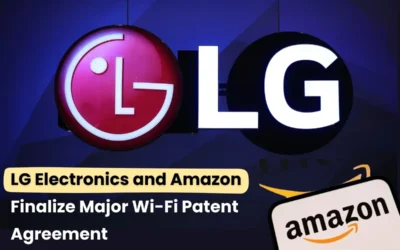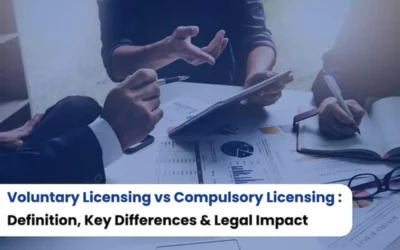
Successful Patent Commercialization Strategies in India. Patent commercialization can be referred to as turning an invention patented into a commercially viable product or service that assists in generating income. With growing innovation in India, most of the inventors, businesses, and researchers have become keen on monetizing their patents so as to achieve maximum benefit from it. Patent commercialization is not as easy as patent filing, but it is actually a series of strategic actions requiring a deep insight into market trends, legal aspects, and commercial processes.
This article explores the key strategies for successful patent commercialization in India, including market research, licensing, partnerships, and others, while highlighting the potential challenges and opportunities. We’ll also conclude with some actionable insights for innovators seeking to monetize their patents.
Understanding of Patent Commercialization in India
As a precursor to the strategies, there is an underlying need to understand what patent commercialization is. Patent commercialization is an exclusive right given to an inventor of an invention against others to use, manufacture, or sell it without permission from the owner. This right is property that can be used for gain.
India exercises control over the grant of patents, their applications, enforcement, and protection as a measure not of small proportions, Patent Act, 1970. Lately, the rising number of patent filings in areas mainly concerning India’s pharmaceuticals, biotechnology, engineering, and software sectors-which depend heavily on the technological bases of inventions-have been witnessed.
Patent commercialization could be considered as a way through which an inventor or assignee may utilize his intellectual property rights and earn from it. The basis of business in commercialization is the various forms of licensing, selling, or exploiting the invention. Moreover, it’s also significant in the generation of revenues and also in innovation and growth in the economy.
Proven Patent Commercialization Strategies in India
Market Research and Feasibility Analysis
Patent commercialization starts with market research. This is to find out if there is a market for the invention and whether it has the potential in the chosen industry. The market research will provide vital information on customer preferences, competing products, price, and regulatory issues.
The major steps that this involves are:
- Market Trend Analysis: In that case, the market, for this product, is something that has been patented. Maybe some sort of renewable energy technology, for instance, which in itself has been patented; studies about it would already exist on how the sustainable solution has become the market demand in India, in due course.
- Feasibility analysis: This is a critical evaluation of the technological, financial, and legal feasibility of launching the product in the market. You would compute at this stage the investment required in the product, marketing, and distribution.
- Target Customers: Whom does the product address? Conduct a survey, interviews, or focus groups amongst the target customers to get their responses and thereby establish that indeed there is demand for the product.
Licensing
Licensing is the most common and efficient method of commercializing a patent. In this case, a license is said to arise between the owner of a patent and another when each grants a license to commercially manufacture for sale or use the patented invention. The license agreement could be an exclusive license, a nonexclusive license, or a sole license, depending on the business need of the owner of a patent.
Hence, enormous benefits were very well hidden under licence:
- Risk less: A patent owner could be the master of the patent, free of heavy overheads for volume production or marketing.
- Guaranteed Steady Revenues: Licencing usually provided the assurance that revenues generated through such license would always be a predictable event.
- Lease of Competencies: Licensing to a business house with specialization in certain industries, naturally enhanced possibilities of successful Commercialization.
This should be clear and action-oriented, scope of usage, timelines, royalties, and all the protections involved in licensing that are accorded to intellectual properties in India. A lawyer could be approached to get a legally valid agreement in place.
Technology Transfer and Partnerships
The other modes of patent commercialization involve the transfer of the technology or establishment of a business partnership with another established business enterprise. It is in the mode of partnering a company owning resources for the development, marketing, and distribution process of your product.
A very good example of technology transfer happens in the academic or research institutions where patented technologies are transferred from universities and research establishments or start-ups to larger firms that may be capable enough to manufacture more.
Important steps involved are,
- Network and technical know-how: You will enjoy the market presence, distribution networks, and technical know-how of such established companies.
- Government-Private Sector Interface: This has been achieved through various initiatives in India by the government, inculcating promotion of technology transfer, which is often carried out in sectors of agriculture and manufacturing and healthcare. For example, Make in India has been launched for innovation, and there is scope for public-private partnerships.
Long-term collaborations with industries whose capabilities match yours can be the secret to successful commercialization of patents.
Read Also: New AI Patent Licensing Body Starts $100 Million Enforcement Drive
Sale of Patents
Patents can also be sold outright. Here, the owner of the patent grants rights to the particular patent being transferred to some third party. He is paid only for the single act of granting such rights. It is a sure bet for a person, as there is assured direct income to the Inventor but on the flip side, an inventor will let go of all his rights to an invention and most probably lose in the long term by missing all future revenues on that particular discovery.
A patent for sale will be more effective:
The inventor doesn’t care about the commercialization process.
- It is simply a process invention which does not entail any process of development on going.
- It is more or less the wish of the customer to have rights to the intellectual property so that it could use the very property in going operations, further developing and the like.
- It should then be encouraged to search for experts in the legal and finance departments, just in case the terms of sale are unfavourable and not well favoured by the inventor.
Start Business or Product Line
Being your own entrepreneur or start-up, it can be about patented inventions of yours – a very rewarding patent commercialization process. Consider Indian States, which are booming for the last decade in the start-up ecosystem. From tax breaks to funding and governmental support for innovators, there are quite a few incentives.
Considerations for Starting a Business on Your Patent
- Business Plan: A good business plan will attract all types of funding sources, whether it is an investor or a lender. One has to present plans regarding commercialization, marketing strategy, and fiscal estimates.
- Fundraising: You have to raise enormous funds in comparison to both manufacturing and advertisement. At this point, you can seek venture capitalists, angel investors, or government aid.
- Intellectual Property Protection: Your business has to lawfully protect itself by upholding your patent rights. In India, businesses have to follow all the provisions set by the Companies Act, 2013, and industry standards as well.
Government and Incubator Support
The Indian government helps in the commercialization process of a patent by providing several support structures, especially for start-ups and small enterprises. Start-up India and the Atwal Innovation Mission (AIM) provide intellectual property development by linking patent owners to finance, mentorship, and market access.
Important activities undertaken by these initiatives are as follows:
- Patent Facilitation Centres: Instituted across India, these centres help innovators with the patent filing and commercialization and licensing process.
- Government Grants and Incentives: The government established grants for different projects which aim to encourage the commercialization of technologies in agriculture, energy, health, and much more.
Marketing and Brand Building
Marketing planning will lead to patent commercialization; good branding opens more chances with possible investors, customers, and partners.
Develop a brand for this patented product: Branding, packaging, and how to create awareness will be part of it.
Digital Marketing: Use search engine optimization, use social media to promote or resort to content-based marketing to effectively target the right people or targeted people and right people with the power. The fact is that this search engine optimization is of major importance because once the user at that very time wants to surf for relevant keywords then the patent of one’s product comes to the top most.
Read More: Patent Licensing: What It Is and How It Works
Conclusion
The first step in patent commercialization is to convert innovative into an opportunity for the business. There might be changing and challenging times in the ever-growing Indian landscape of patents; however, there is an opening for strategy and opportunities; one can cash as much as they can from patents with proper research in the markets, licensing or partnership towards a route of transfer of technology as well as for business development.
Such strategies, combined with an aiding start-up ecosystem of India then allows the commercialization of such innovators’ patents. It still, however, needs a lot of thinking and practice before a trip is sustainable in the long term.









